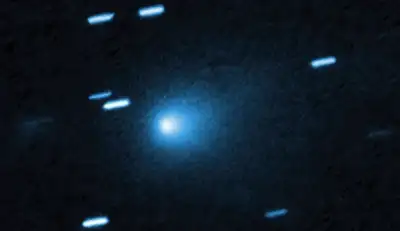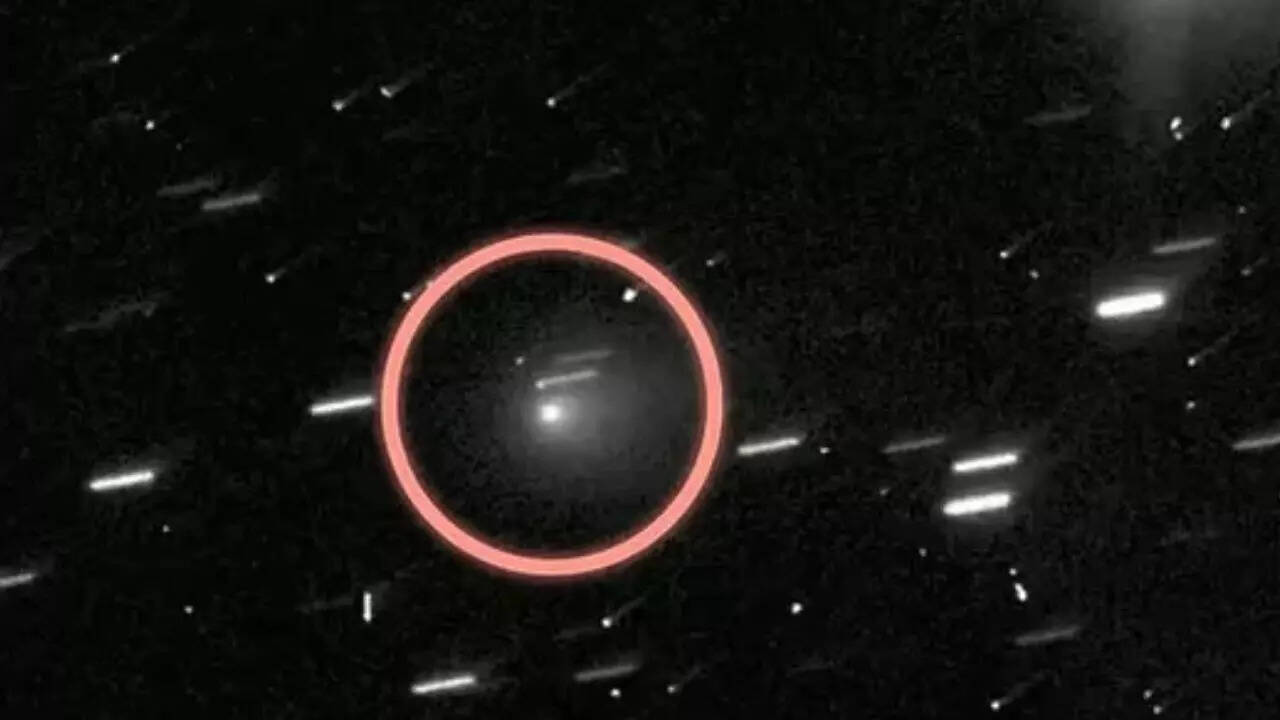ARTICLE AD BOX

Comet 3I/ATLAS (Photo: NASA)
Humans have always been curious about the existence of aliens or heavenly bodies, that expand our understanding of the universe. And sometimes an interstellar object passes by our solar system carrying secrets from distant star systems.
These cosmic refugees travel unfathomable distances across space and time before being captured in our telescopes’ fields of view.This time, an icy traveler from beyond is moving silently through space, and as this visitor ventures closer to our Sun, astronomers are racing to capture every precious morsel of data, knowing that once it passes, it will be gone and might not be in the reach of astronomers for research.Interstellar comet 3I/ATLAS has been spotted by scientists using the Near‑Infrared Spectrograph (NIRSpec) instrument of NASA’s James Webb Space Telescope (JWST). JWST trained its infrared vision on the object on August 6, 2025, marking a landmark first study of its kind, according to NASA.
What happened when it approached the Sun
As 3I/ATLAS approached the Sun, its icy interior began turning directly into gas, and this process is called “outgassing”.
This creates the hazy halo, or coma, that surrounds a comet. NIRSpec detected a potent mix of gases and solids, including carbon dioxide, water, water ice, carbon monoxide, and even the smelly carbonyl sulfide.
The content ratio of the comet was unusual!
According to the study published by Cornell University, the carbon dioxide-to-water mixing ratio was around 8, making it one of the highest ever recorded in a comet. As the researchers wrote in the study, "Our observations are compatible with an intrinsically CO₂‑rich nucleus, which may indicate that 3I/ATLAS contains ices exposed to higher levels of radiation than Solar System comets, or that it formed close to the CO₂ ice line in its parent protoplanetary disk".

Comet 3I/ATLAS dominated by CO2 (Photo: NASA)
This composition might have happened as the comet might have formed either in a colder region where carbon dioxide froze early, known as the CO₂ ice line or it may have been irradiated over eons in space, building up its unusual composition.Another possibility is that a reflective or insulating crust is keeping heat from reaching deeper layers, which suppresses water ice from sublimating as rapidly as CO₂ and CO.
How is 3I/ATLAS different from other comets
What makes 3I/ATLAS different from other comets is that it came from outside our solar system, which makes it an interstellar comet, and it is only the third ever discovered.
Unlike most comets we know, which formed around our Sun, 3I/ATLAS was born in another star system and traveled across space for millions of years.

Image: Daily Mail
According to Space.com, 3I/ATLAS may have formed in a zone cloud of gas and dust called a protoplanetary disk that surrounded the young star it came from. In that area, temperatures were low enough for carbon dioxide to freeze into solid ice, while other gases stayed in gas form.There’s less water vapour in the comet’s coma than expected. This could mean that something in the comet’s structure is blocking heat from reaching deep inside, preventing water ice from turning into gas as easily as carbon dioxide or carbon monoxide.



.png)
.png)
.png)
















 3 hours ago
2
3 hours ago
2








 English (US) ·
English (US) ·